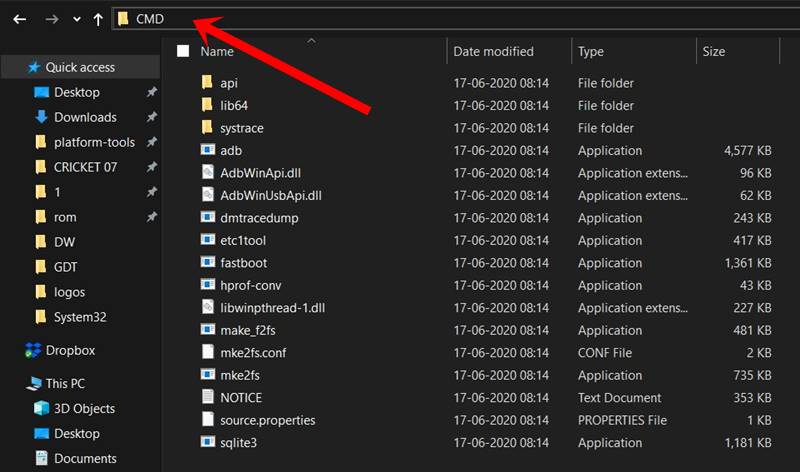In this regard, Mi A1 and A2 indeed received the updates in a timely manner. However with this deivce things never turned out to be as expected. Well, things got so out of hand that Xiaomi with the rollout of the Android 11 update that devices were stuck in a bootloop or got bricked This is just not acceptable, considering the fact that it was the official update provided by the company. On the good side though, Xiaomi has finally decided to end this Mi Android One series, with A3 being the last member of the family. So while future users would be spared from these issues, what about the current ones? This is because there are quite a few users who have reached out to me asking for ways to bring their Mi A3 back to life. If you are also among them, then this guide shall help you out. Follow along for the detailed instructions.
Download Patched Firehose File (prog_emmc_firehose.mbn) for 600+ Android DevicesUnbrick Redmi Note 7 | Note 8 | Note 9 Series: The Fix?Fix Mi Account Authorization | Unbrick Xiaomi | EDL ModeHow to Bypass Xiaomi Account Verification via Mi Unlock Tool
Xiaomi and EDL Mode: It’s Complicated!
Recently Xiaomi made a massive change that leads to disastrous consequences for the tech enthusiasts and developers alike. The only ones who would remain unaffected by this decision are the ones who maintain a safe distance from Unlocking Bootloader, Rooting, and Flashing Custom binary. Rest all the users like us who are engrossed in these tweaks are the suffering party. So what really happened? Well, if you step into custom development, then it opens the gates to the plethora of customization options. From installing a custom recovery like TWRP to getting access to the system partition via Magisk, the possibilities stand endless. Along the same lines, you could flash custom ROMs, Magisk Modules, Substratum Themes, Xposed Frameworks, and the likes. But these tweaks are risky in nature. If you end up flashing a wrong binary or flash the correct binary to the incorrect slot (for A/B partition devices), then you are inviting trouble. By trouble, we mean the device would end up in a bootloop, soft brick, or worse hard brick. While the first two are usually easy to deal with, it is the latter one that might be concerning for the users. Fortunately, the devices that have Qualcomm as the underlying chipset comes with EDL Mode or the Emergency Download Mode. You only need to boot your device to EDL and flash the firmware file and your device will be back from dead. Unfortunately, Xiaomi decided to block this EDL mode for the general users.
So only the users who have an authorized Mi Service Centre ID could flash the firmware via Mi Flash Tool in EDL Mode. As for the general users, there does exist a workaround in the form of using the Mi A3 Patched Firehose File (prog_emmc_firehose.mbn) or the prog_firehose_ddr_unbrick.elf file. However, finding both these files is among the most challenging task ever. With that said, if your Xiaomi device is stuck in bootloop or soft brick mode, there is still a handy way out. You could easily unbrick your Xiaomi device (which in this case is Mi A3) via Fastboot Commands. We wouldn’t be using any Mi Flash Tool or any other software for that matter. So how will then this task be carried out? Follow along for the detailed instructions.
How to Boot any (Bricked/Unbricked) Android Device to EDL ModeRoot Android 11 via Magisk Patched boot.img (without TWRP)Fix Magisk patched boot.img issue while Rooting Android 11How to Pass Magisk SafetyNet on Rooted Android 11
How to Unbrick Mi A3 via Fastboot Commands
Now that we are done with the explanation part, let’s turn our attention towards the unbrick instructions. As I have already mentioned before, the below instructions are only valid for devices that are soft-bricked or in a boot loop. Furthermore, the process is going to wipe all the data on your device. So keep this thing in mind before proceeding and take a backup beforehand (if possible y any means). Droidwin and its members wouldn’t be held responsible in case of a thermonuclear war, your alarm doesn’t wake you up, or if anything happens to your device and data by performing the below steps.
STEP 1: Download Android SDK
To begin with, download and install the Android SDK Platform Tools. This is the official ADB binary file provided by Google and is used to execute ADB and Fastboot Commands.
STEP 2: Download Mi A3 Fastboot ROM
Next up, download the Fastboot ROM for your device. As for this guide, I am using the Global Variant V11.0.16.0.QFQMIXM. [Here is the European build: V11.0.3.0.QFQEUXM]. You are free to try any version of your choice, but it is recommended to try the newer builds only and of your region. Here is how to understand the Xiaomi Fastboot firmware version. [Don’t Miss: How to Flash Xiaomi Fastboot ROM without Mi Flash Tool].
11.0.16.0 – Firmware versionQ – Android version (Q-> Android 10).FQ – Smartphone model code (FQ = Xiaomi Mi A3).MI – Firmware build type (MI for Global | EU for Europe)XM – Firmware version code
Now that you have got hold of the required firmware file, proceed ahead to the next step to unbrick Mi A3 via Fastboot Commands.
STEP 3: Move Mi A3 Fastboot ROM Files to ADB Folder
STEP 4: Boot Bootloop/Soft Bricked Mi A3 to Fastboot Mode
STEP 5: Change Active Slot to A
Before we share the fastboot command to unbrick Mi A3, there a few important things that need to be kept in mind. Why change the active slot to A? This is because the below command will flash the system.img file to slot A (see STEP 6 command- fastboot flash system_a system.img). Whereas on Slot B, we are flashing the system dummy image file or the system_other.img (see STEP 6 command- fastboot flash system_b system_other.img). If you don’t change the active slot to A before flashing, then after flashing your device will end up in a bootloop. You will then have to boot your device to Fastboot and change slot via fastboot set_active a to switch to the slot where you have installed system.img file. So to avoid bootloop, it’s better to change the slot beforehand (and that is what we have done here).
How to Execute Android ADB Fastboot Commands WirelesslyHow to Use ADB and Fastboot Commands on Android Without PCFix adb server version doesn’t match this client; killing..How to Run ADB Fastboot Commands directly on Android without Root
STEP 6: Flash Firmware via Fastboot Commands to Unbrick Mi A3
Finally, we are down to the most important part of this article. I have shared all the required fastboot commands to flash the stock firmware onto your Mi A3 and unbrick it. To begin with, make sure that your device is connected to the PC via USB in Fastboot Mode. Then head over to the Command Prompt window that is opened inside the platform-tools folder.
Now execute the below commands in this CMD window. I would highly recommend that you execute these commands one at a time, rather than copy-pasting all of them at one go. Once you have successfully executed all the above commands, your device will reboot to the OS. And with this, we conclude the guide on how to unbrick Mi A3 via Fastboot Commands. The best part about this tutorial is the fact that it doesn’t require any Mi A3 Patched Firehose File (prog_emmc_firehose.mbn) or the prog_firehose_ddr_unbrick.elf file. Furthermore, we didn’t need to make use of the Mi Flash Tool. With that said, if you have any queries concerning the aforementioned steps, do let us know in the comments section below. We will get back to you with a solution at the earliest.
How to Fix Soft brick/Bootloop after installing TWRP RecoveryCreate and Port TWRP Recovery to any Android Device: GuideHow to Uninstall TWRP and Restore Stock Recovery on AndroidHow to Uninstall Magisk Modules using TWRP Recovery
About Chief Editor




